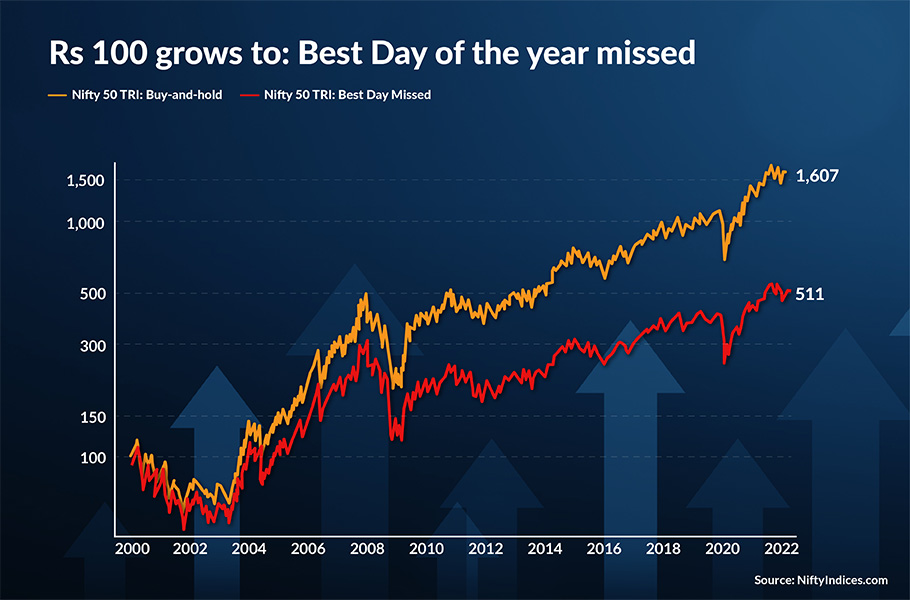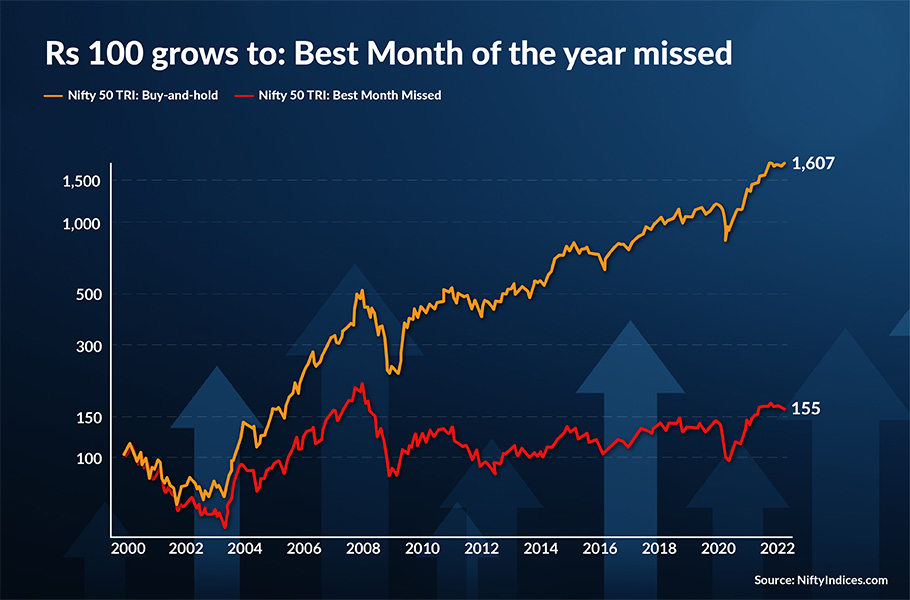
Why buy-and-hold is the best strategy for most equity investors
While trying to avoid the worst days, what if you miss the best days? In five out of 22 years, the best and the worst days of the year were less than a week apart

No one wants to be in the markets when the markets are struggling. During such times, you may want to stop your SIPs or even exit. And come back when the markets have “normalised.” However, this may not be a good approach.
There are two issues. The first one is behavioural. It is easy to exit but difficult to get back into the market. If the markets inch lower after you sell, you will find it difficult to invest since the stock market commentary will likely be even more adverse. If the markets inch up after you sell, you will still find it difficult to invest. After all, how do you justify investing at a higher level?
While this may seem like a small obstacle to overcome, it is not. Our minds play strange games when it comes to money decisions.
Watch: Big Money Ep 3 | Indians make up to 16% by investing in P2P
The second issue is the unpredictable nature of the markets. Even if you overcome the behavioural problem, there is no obvious signal of forthcoming good returns. Therefore, you would not exactly know when the tide has turned. It is easy to look at historical data and identify the inflection points but that’s just hindsight bias.
Missed opportunity
Further, the market returns tend to be concentrated over short periods. Therefore, while trying to avoid bad returns, if you miss just a good day of return every year, your portfolio returns will come down drastically.
Let us look at the data since the turn of the century – from January 2000 till the end of March 2022. That is over 22 years of data.
If you invested ₹100 in a Nifty 50 index fund in January 2000, your investment would have grown to ₹1,607 on March 31, 2022. The buy-and-hold strategy gives a CAGR of 13.3 per cent per annum.
Also read: Indians should shed sentiment, use reverse mortgage for sunset years
However, if you miss the best day of each year, your investment will grow to only ₹511; a CAGR of 7.6 per cent per annum. You end up with less than one-third the corpus under buy-and-hold. That is the cost of missing just 22 days of return over 22 years.

What if you were to miss the best week of returns every year for the same period? You end up with only ₹315 on March 31, 2022. This is 80 per cent less than the buy-and-hold strategy. CAGR of just 5.3 per cent per annum.

While you must be really unlucky to miss out the best day or week year after year, this data suggests that the market returns tend to be concentrated.
As an investor, you want to avoid the worst days and participate on the best days. However, there are no clear signals. While trying to avoid the worst days, what if you miss the best days? In five out of 22 years, the best and the worst days of the year were less than a week apart. In 11 years, the best and the worst days were less than 30 days apart.
In 11 out of 22 years, the best day came when the markets were below 100-day moving average. In nine out of 22 years, the best day came when the markets were below 200-day moving average. You can see it is not easy.
Also read: How much life cover do you need? Here’s how you can calculate the amount
Market timing can generate great returns and there are smart investors and traders who can time the markets better than the rest of us. However, for the most of us, a buy-and-hold strategy is a much simpler strategy to execute. When you make investment decisions, you just do not have to deal with market movements. You must deal with your emotions, too.
No investment strategy works all the time and when the things do not go your way, there is mental dissonance and confusion. A buy-and-hold strategy reduces the number of decisions you make and helps you stick with the investment discipline.
(The writer is a Registered Investment Advisor (RIA) and writes at www.PersonalFinancePlan.in)

